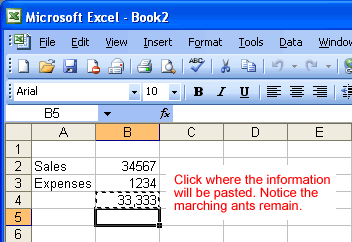Navigating the Spreadsheet Symphony: An Exhaustive Guide to Moving, Copying, and Deleting Cell Contents in Microsoft Excel 2003

Introduction:
In the realm of spreadsheet mastery, Microsoft Excel 2003 remains an enduring titan, providing users with robust tools for data manipulation. Among the fundamental skills within this landscape are the abilities to move, copy, and delete cell contents. In this exhaustive guide, we embark on a comprehensive exploration of these essential operations, unveiling the intricate symphony of Excel 2003 that allows users to orchestrate their data with precision and finesse.
Section 1: The Essence of Data Management
1.1 Grasping Data Dynamics: At the core of Excel’s prowess lies the dynamic management of data within cells. Delve into the essence of data manipulation, understanding how cells serve as vessels for information and insights.
1.2 The Power of Movement: The ability to move, copy, and delete cell contents empowers users to organize and refine their data fluidly. Uncover the significance of these operations in the context of creating coherent and structured spreadsheets.
Section 2: Moving Cell Contents
2.1 The Basics of Moving: Initiating our exploration, delve into the foundational principles of moving cell contents. Understand the various methods for relocating data within a worksheet, from simple cut-and-paste operations to more advanced techniques.
2.2 Drag-and-Drop Functionality: Excel 2003 offers a user-friendly drag-and-drop functionality for moving cell contents. Explore how to leverage this intuitive feature to effortlessly rearrange data within your spreadsheet, promoting a seamless workflow.
Section 3: Copying Cell Contents
3.1 The Art of Copying: Copying cell contents is a pivotal skill for data replication and analysis. Delve into the intricacies of copying data, exploring the diverse methods available, each tailored to specific scenarios and user preferences.
3.2 The Clipboard and Copy-Paste Operations: Uncover the role of the Clipboard in Excel 2003’s copy-paste operations. Learn how to utilize this versatile tool to copy data from one location and seamlessly paste it into another, maintaining formatting and formulas.
Section 4: Advanced Copying Techniques
4.1 Copying with Paste Special: Excel 2003 introduces the Paste Special feature, unlocking advanced copying options. Explore the myriad possibilities offered by Paste Special, from transposing data to pasting values and formulas selectively.
4.2 Copying Data Across Worksheets and Workbooks: Excel’s versatility extends to copying data across multiple worksheets and workbooks. Delve into the techniques for seamlessly copying cell contents between different sheets and even across separate Excel files.
Section 5: Deleting Cell Contents
5.1 Understanding Deletion: Deleting cell contents is a strategic maneuver in data refinement. Explore the various methods for deleting data, from simple clearing operations to more nuanced approaches that preserve cell formatting.
5.2 The Clear Command: Excel 2003’s Clear command offers a comprehensive toolset for deleting cell contents. Uncover the different options within the Clear command, such as Clear All, Clear Formats, and Clear Contents, each serving distinct purposes in data management.
Section 6: Handling Deletion with Caution
6.1 Undo and Redo Operations: As with any data manipulation, caution is essential. Explore the power of Excel’s Undo and Redo operations, allowing users to retract or reinstate actions, ensuring that inadvertent deletions can be rectified with ease.
6.2 Tracing Precedents and Dependents: Excel 2003 provides auditing tools for understanding the relationships between cells. Explore how tracing precedents and dependents can help users assess the impact of deletions on formulas and data integrity.
Section 7: Data Validation and Deletion
7.1 Data Validation Considerations: When deleting cell contents, it’s crucial to consider the implications for data validation rules. Understand how to navigate data validation constraints and avoid unintended consequences when clearing or deleting data.
7.2 Custom Error Alerts: Excel 2003 allows users to set up custom error alerts for data validation. Delve into the process of configuring these alerts to provide informative messages when attempting to delete cell contents that violate validation rules.
Section 8: Protecting Data During Deletion
8.1 Protecting Worksheets: Excel 2003 enables users to protect worksheets, safeguarding data against accidental or unauthorized deletions. Explore the steps for worksheet protection, balancing data security with the need for efficient data manipulation.
8.2 Password Protection: Understand the role of password protection in Excel 2003 and how it can be employed to secure worksheets or workbooks. Delve into the nuances of password-protected deletion, ensuring data remains secure in collaborative environments.
Conclusion:
In conclusion, mastering the art of moving, copying, and deleting cell contents in Excel 2003 is fundamental to effective data management. This comprehensive guide equips users with the skills to navigate the intricate symphony of Excel’s data manipulation tools. By understanding the principles of movement, replication, and deletion, users can orchestrate their data with precision, fostering efficiency and proficiency in the dynamic realm of spreadsheet software. As Excel 2003 continues to stand as a testament to timeless functionality, its robust features for data manipulation empower users to refine, analyze, and present their data with unparalleled finesse.




